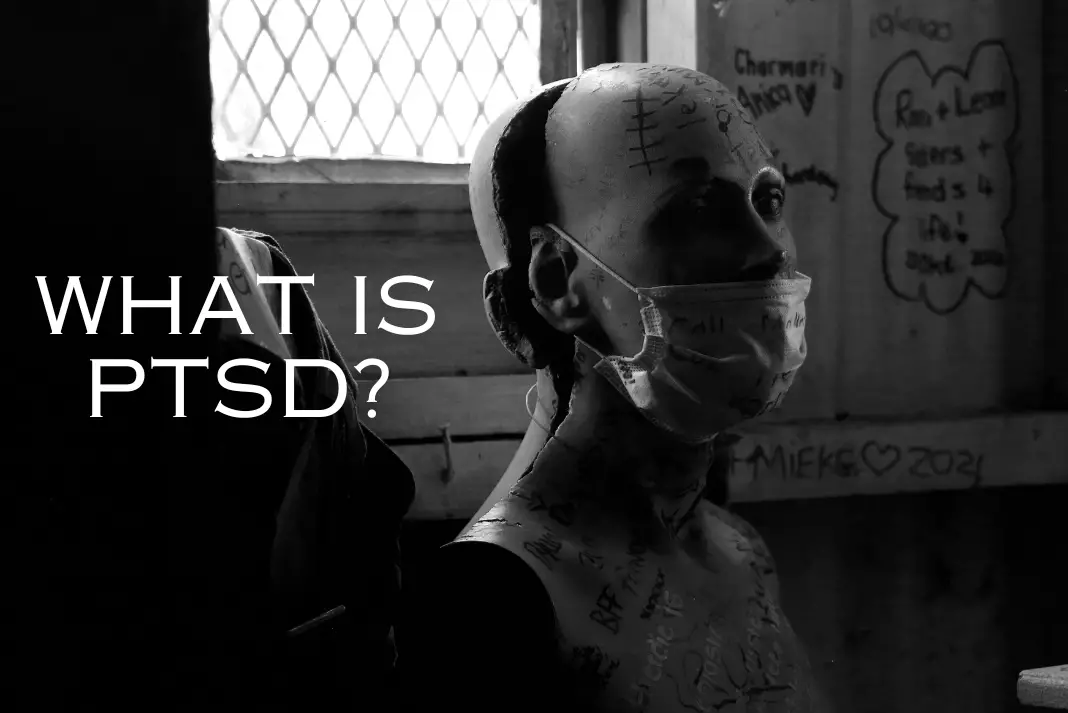Embarking on life after trauma is a tough and deeply personal journey. In this article, we’re diving into the complex world of Post Traumatic Stress Disorder (PTSD). Our goal? To help you understand it better and offer some guidance on how to overcome its challenges. Getting through life after trauma means acknowledging its profound impact and exploring coping strategies and therapy with kindness. Come along as we peel back the layers of PTSD, talking about its symptoms, treatment options, and the resilience that can shine through during the healing process. Think of this article as a supportive guide for those navigating the often rocky road of life after trauma.
Table of Contents
Unraveling PTSD
PTSD, or Post-Traumatic Stress Disorder, is a mental health condition that can happen to people who’ve been through really tough experiences. It could be something they went through or saw. The signs often include reliving the bad experience in flashbacks or nightmares, feeling super anxious, and not being able to control thoughts about what happened. Dealing with PTSD can seriously affect how someone goes about their day, their relationships, and their general sense of well-being. Getting through it usually involves understanding, support from others, and sometimes professional help to manage and recover.
Recognizing the Signs and Symptoms
Recognizing the signs and symptoms of PTSD (Post-Traumatic Stress Disorder) is crucial for understanding and addressing this mental health condition. Here are common indicators:
Flashbacks: Vivid and distressing memories or reliving the traumatic event as if it’s happening again.
Nightmares: Recurrent and intense bad dreams related to the traumatic experience.
Severe Anxiety: Overwhelming feelings of fear, unease, or panic, often triggered by reminders of the trauma.
Avoidance: Actively steering clear of people, places, or activities associated with the traumatic event to avoid triggering memories.
Negative Changes in Thinking and Mood: Persistent negative thoughts about oneself or the world, feelings of detachment, numbness, or a diminished interest in activities.
Difficulty Concentrating: Problems focusing, making decisions, or remembering details, often referred to as “mind fog.”
Hyperarousal: Heightened reactivity, including irritability, anger, difficulty sleeping, and an exaggerated startle response.
Emotional Numbing: Feeling emotionally numb, detached, or having difficulty experiencing positive emotions.
Sleep Disturbances: Persistent issues with falling asleep, staying asleep, or experiencing restful sleep.
Irritability and Outbursts: Easily angered or prone to sudden emotional outbursts, sometimes without an apparent cause.
Physical Symptoms: Headaches, stomachaches, or other unexplained physical complaints, often related to stress.
It’s essential to note that symptoms can vary in intensity and duration, and not everyone with PTSD will experience the same set of symptoms. If you or someone you know is showing signs of PTSD, seeking professional help from mental health professionals is crucial for proper diagnosis and effective management.

Self-Help Strategies
Coping with PTSD is like putting together a toolkit of self-help strategies that work alongside professional support. Here are some down-to-earth approaches to consider:
Know Your Stuff: First things first, get to know PTSD inside and out. Understanding what you’re dealing with, its symptoms and the hurdles others face can give you a roadmap for your own journey.
Chill Out: Build relaxation into your daily groove. Whether it’s taking slow breaths, meditating, or unwinding your muscles, find what chills you out and make it a regular thing.
Stay Connected: Keep your people close. Sharing your thoughts and experiences with trusted friends and family can be a game-changer for emotional support.
Move Your Body: Exercise isn’t just good for the body; it’s a mood lifter too. Whether it’s a jog, a yoga session, or any movement you enjoy, make it a part of your routine.
Watch the Buzz: Cut back on things like caffeine and nicotine that can amp up anxiety. They might be messing with your sleep and making your PTSD symptoms worse.
Live Healthy: Your lifestyle matters. Eating well, getting enough sleep, and not overdoing it on alcohol can boost your overall well-being.
Express Yourself: Let it out. Whether it’s through writing, art, or any creative outlet, expressing your feelings can be a powerful way to process what you’re going through.
Stay Present: Mindfulness is key. Practice exercises that keep you in the moment, helping you deal with intrusive thoughts.
Triggers on the Down-Low: Know your triggers and, when possible, ease up on exposure. Whether it’s places, people, or activities linked to the trauma, give yourself some space.
Remember, everyone’s journey is different. Tailor these strategies to fit you. And if things get tough, reaching out to mental health pros can be a game-changer on your road to recovery.
Treatment Options of Post Traumatic Stress Disorder
Dealing with PTSD involves a mix of therapies tailored to the individual’s needs. Here’s a breakdown of common treatment options:
Counseling: Chatting with a therapist, using methods like cognitive-behavioral therapy (CBT) or exposure therapy, helps process trauma, manage symptoms, and build coping strategies.
Medication: Sometimes, antidepressants or anti-anxiety meds like SSRIs or SNRIs are prescribed to ease symptoms like depression, anxiety, or trouble sleeping.
Family Bonding: Bringing family into therapy can foster understanding and support, creating a positive space for recovery.
Couples Connection: If you’re in a relationship, couples counseling tackles how PTSD affects the relationship, improving communication and offering strategies for mutual support.
Mind and Body Harmony: Practices like yoga, meditation, and mindfulness aren’t just trendy; they genuinely help manage stress, boost self-awareness, and enhance overall well-being.
Alternative Avenues: Some find relief in alternative therapies like acupuncture, massage, or art therapy, complementing more traditional methods.
Furry Companions: Service animals, especially dogs trained for PTSD support, provide emotional help and a comforting presence.
Virtual Support: Telehealth services step in with accessible mental health support, letting individuals connect with therapists remotely.
Remember, treatment plans are as unique as the person going through them. Seeking guidance from a mental health professional is key to figuring out the most effective approach for dealing with PTSD.

Seeking Professional Help
Seeking professional help is a crucial step for individuals facing challenges with their mental health or dealing with complex life situations. Mental health professionals, including therapists, counselors, and psychiatrists, are trained to provide guidance, support, and evidence-based interventions. Through therapy and counseling sessions, individuals can explore and process their thoughts and emotions, develop coping strategies, and gain valuable insights into their behavior and challenges.
Professionals can also offer diagnoses when appropriate and prescribe medication if necessary. The therapeutic relationship provides a safe and confidential space for individuals to express themselves openly, fostering a collaborative journey toward improved mental health and well-being. Whether managing mental health conditions, navigating life transitions, or seeking personal growth, the expertise and support of mental health professionals can be instrumental in promoting lasting positive change.
Preventing PTSD
Dealing with Post-Traumatic Stress Disorder (PTSD) is complex, and while complete prevention isn’t always possible, there are ways to soften its impact and reduce the risk of symptoms. Here are some practical approaches:
Early Support: Right after a traumatic event, providing support through counseling or debriefing sessions can be crucial. This early intervention helps process the experience and lowers the risk of long-term effects.
Solid Support System: A reliable network of friends and family acts as a shield against the effects of trauma. Emotional support from social connections provides a sense of security.
Building Resilience: Training programs that focus on resilience, incorporating cognitive-behavioral strategies and stress-management techniques, can enhance an individual’s ability to cope with stress and adversity.
Education on Preparedness: In situations prone to trauma, offering education on potential psychological impacts and coping strategies is beneficial. This helps individuals prepare for and navigate challenging experiences.
Healthy Coping Habits: Encouraging the development of healthy coping mechanisms, such as mindfulness, relaxation techniques, and problem-solving skills, contributes to emotional resilience.
Mindfulness and Stress Reduction: Practices like mindfulness and stress reduction have proven effective in preventing or reducing PTSD symptoms. These techniques center on staying present and managing stress.
Community Support: Community-based programs providing support and resources, like outreach initiatives, workshops, and mental health awareness campaigns, play a preventive role.
Trauma-Informed Training: Training professionals to be trauma-informed in fields like healthcare, emergency services, and education creates a supportive environment for those who may experience trauma.
Safety Promotion: Creating and promoting safe environments, both physically and psychologically, reduces the likelihood of traumatic experiences.
Combatting Stigma: Reducing the stigma around seeking mental health support encourages individuals to seek help earlier, potentially preventing the escalation of trauma-related symptoms.
It’s essential to remember that responses to trauma differ, and there’s no one-size-fits-all solution. If someone has experienced trauma, seeking professional help promptly is crucial for a proper assessment and intervention.
Conclusion
In summary, navigating life after trauma, particularly with PTSD, involves understanding its impact, recognizing symptoms, and seeking personalized help. Professional support, self-help strategies, and preventive measures contribute to a holistic approach. Each journey is unique, but with the right assistance and resilience, it’s possible to overcome trauma’s challenges and move towards a brighter future. Remember, seeking help is a brave step towards healing.



